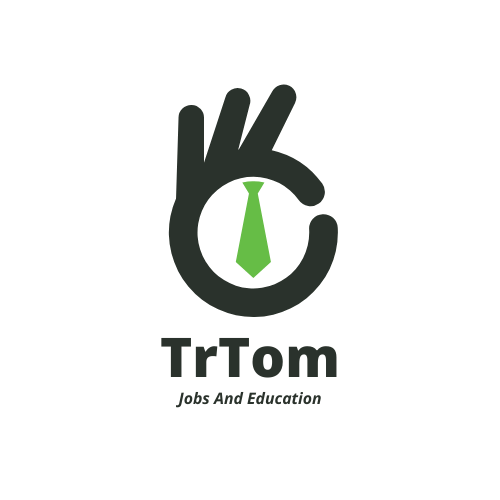Introduction
Importance of Analytics in Healthcare
In today’s rapidly evolving healthcare landscape, analytics has become a critical pillar for operational success. By leveraging data-driven insights, healthcare organizations can make informed decisions that enhance patient care and streamline processes. For instance, a hospital that monitors patient flow using analytics can identify bottlenecks, reducing wait times and improving overall satisfaction. This underscores how essential analytics is in pinpointing issues and optimizing resource allocation. Key reasons for using analytics in healthcare include:
- Enhanced Decision-Making: Data insights guide strategic choices.
- Operational Efficiency: Analytics identifies inefficiencies in processes.
- Improved Patient Outcomes: Tracking metrics improves quality of care.
Overview of MGMA Analytics
The Medical Group Management Association (MGMA) stands at the forefront of healthcare analytics, offering vital resources to medical practices aiming for excellence. MGMA Analytics supplies benchmarking data and insights that enable healthcare organizations to assess their performance against industry standards. Using MGMA’s comprehensive data tools empowers practices to:
- Understand financial health through detailed reports.
- Compare practice metrics to peers, facilitating performance improvement.
- Build a culture of accountability by regularly monitoring key indicators.
Through these resources, MGMA Analytics becomes instrumental in steering healthcare organizations toward more effective management strategies, ensuring both operational and clinical goals align for success.
Understanding MGMA Data
Key Metrics for Practice Improvement
To effectively leverage MGMA data, medical practices must focus on critical performance indicators that guide improvements and strategic decisions. Key metrics include:
- Provider Compensation: Understanding compensation trends helps ensure competitive salaries for providers.
- Revenue Cycle Analytics: Monitoring billing and collections assists in identifying revenue leakages.
- Patient Wait Times: Optimizing appointment schedules based on wait time data can enhance patient satisfaction.
These metrics not only track performance but also highlight areas ripe for enhancement, leading to improved practice efficiency.
Benefits of Utilizing MGMA Data
The advantages of harnessing MGMA data are numerous:
- Informed Decision-Making: Access to accurate data allows practices to make data-driven choices.
- Benchmarking: Comparing your practice’s performance against industry standards ensures you remain competitive.
- Cost Reduction: Identifying inefficient practices can lead to significant cost savings.
By utilizing MGMA data, practices can not only improve operations but also enhance service delivery, ultimately benefiting both staff and patients.
Improving Financial Performance
Transitioning from operational efficiency, it’s crucial to delve into improving financial performance, a key priority for any healthcare organization. Effective strategies in this area can significantly impact overall sustainability.
Revenue Cycle Management Analysis
Analyzing the revenue cycle management (RCM) processes is paramount. Organizations should identify bottlenecks that hinder timely reimbursements and work towards streamlining these processes. For instance, employing advanced data analytics helps unveil patterns in claim denials and underpayments, enabling focused adjustments to billing practices.
- Key focus areas include:
- Claim submission: Automation to reduce errors and speed up processing.
- Denial management: Machine learning tools to analyze historical claims data and predict denial causes.
- Revenue forecasting: Utilizing analytics to accurately predict cash flows and future income.
Cost Control Strategies
To complement RCM analysis, implementing solid cost control strategies can yield remarkable savings. Organizations can adopt several practices to ensure financial health:
- Dynamic Costing Models: Shift from static to dynamic costing to align expenses with actual resource usage.
- Supplier Diversity: Avoid reliance on single suppliers to mitigate risks.
- Staffing Optimization: Analyze workforce needs to eliminate excess costs and ensure efficient operation.
By focusing on these areas, healthcare organizations can strengthen their financial foundation while enhancing patient care and operational capabilities.
Enhancing Operational Efficiency
Workflow Optimization Techniques
To streamline operations in healthcare settings, organizations can adopt various workflow optimization techniques. By employing data-driven insights, workflows can be tailored to meet the specific needs of patients and staff. For instance, utilizing real-time analytics can highlight bottlenecks in patient flow, allowing for quick adjustments.
- Implementing electronic health records (EHR) improves data accessibility.
- Automating routine tasks frees up staff for more critical activities.
- Creating interdisciplinary teams fosters collaboration and efficiency.
Staffing Optimization Solutions
In addition to workflows, optimizing staffing is crucial for operational efficiency. Leveraging predictive analytics helps match staff schedules with patient needs.
- Using staffing software enables real-time adjustments based on patient volume.
- Regular assessments of staff performance identify areas for improvement.
- Investing in training ensures staff are equipped with necessary skills.
Together, these techniques contribute significantly to improving operational performance and enhancing the overall patient experience.
You can also read on: Secrets to Writing a Winning Scholarship Recommendation Letter
Optimizing Patient Care
Patient Satisfaction Analysis
To ensure the highest quality of patient care, healthcare organizations must prioritize patient satisfaction. Analyzing patient feedback through surveys can provide critical insights into their experiences and expectations.
- Key Metrics:
- Patient satisfaction scores
- Wait times
- Communication effectiveness
For instance, a clinic recently revamped its appointment system based on patient feedback, resulting in a 30% increase in satisfaction ratings. By regularly reviewing satisfaction data, practices can identify specific areas for improvement, fostering a more positive environment for both patients and staff.
Quality Improvement Initiatives
Alongside satisfaction analysis, implementing quality improvement initiatives is crucial for enhancing patient care. These initiatives should focus on measurable outcomes, such as reducing hospital readmission rates or improving treatment protocols.
- Strategies Include:
- Staff training on best practices
- Regular performance evaluations
- Patient education programs
By actively engaging both patients and staff in these initiatives, healthcare organizations can create a culture of continuous improvement. An example includes a hospital that introduced patient-centered rounds, significantly reducing readmission rates and enhancing overall care quality.
You can also read on: Achieve Fluency in Korean Through Fun and Interactive Classes at Rolling Korea

